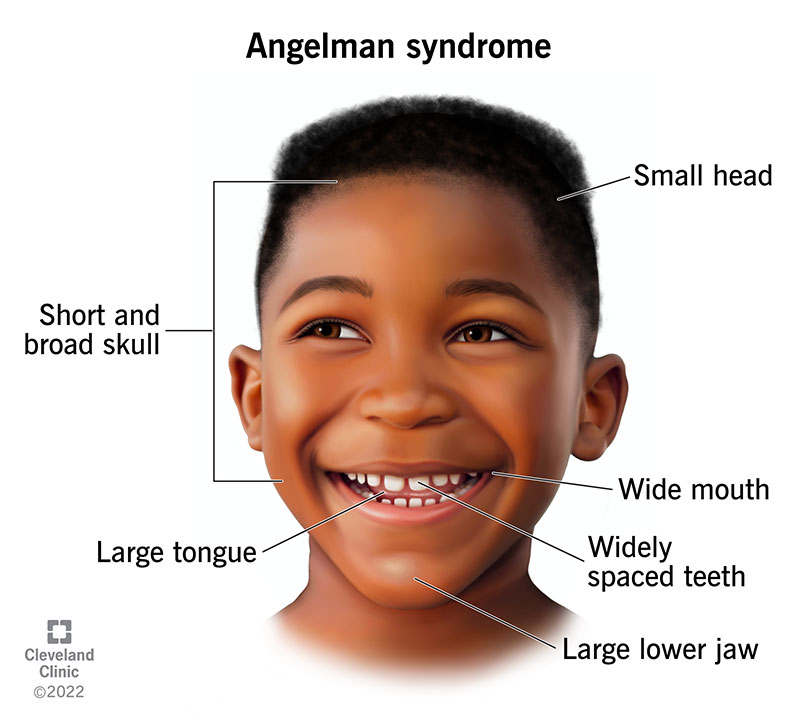Symptoms and Characteristics: Angelman Syndrome Wiki

Angelman syndrome is a rare neurodevelopmental disorder that affects a person’s physical, intellectual, and behavioral development. Individuals with Angelman syndrome exhibit a unique set of symptoms and characteristics, which are often recognizable from early childhood.
Developmental Delays and Intellectual Disability
Individuals with Angelman syndrome typically experience significant developmental delays. They often have delayed milestones in areas such as sitting, crawling, walking, and talking. Intellectual disability is a defining feature of Angelman syndrome, and individuals with this condition often have difficulty with cognitive skills like learning, memory, and problem-solving.
Behavioral Issues
Individuals with Angelman syndrome often exhibit characteristic behavioral patterns. These can include:
- Happy disposition: Individuals with Angelman syndrome are often described as having a happy and cheerful disposition. They may frequently smile, laugh, and engage in playful behavior.
- Hyperactivity: Many individuals with Angelman syndrome have a high energy level and may exhibit hyperactivity. This can manifest as excessive running, jumping, and difficulty sitting still.
- Attention-seeking behavior: Individuals with Angelman syndrome may engage in attention-seeking behaviors, such as waving their arms, making noises, or approaching others for interaction.
- Sleep disturbances: Sleep problems are common in individuals with Angelman syndrome. They may have difficulty falling asleep, staying asleep, or waking up at unusual times.
- Hand-flapping: A distinctive characteristic of Angelman syndrome is hand-flapping. Individuals may flap their hands repeatedly, often in a rhythmic pattern.
Physical Characteristics, Angelman syndrome wiki
Individuals with Angelman syndrome may exhibit a range of physical characteristics, including:
- Seizures: Seizures are common in individuals with Angelman syndrome. These seizures can vary in frequency and severity.
- Ataxia: Ataxia, a lack of coordination, is often present in individuals with Angelman syndrome. This can affect their gait, balance, and fine motor skills.
- Protruding tongue: Individuals with Angelman syndrome may have a protruding tongue, which can be a noticeable physical feature.
- Wide mouth: A wide mouth is often observed in individuals with Angelman syndrome.
- Small chin: Individuals with Angelman syndrome may have a small chin.
- Strabismus: Strabismus, or misalignment of the eyes, is another common physical feature associated with Angelman syndrome.
Communication Challenges
Individuals with Angelman syndrome often face significant communication challenges. They may have difficulty with speech development, language comprehension, and verbal expression. While some individuals with Angelman syndrome may develop some speech, many require alternative communication methods, such as sign language, augmentative and alternative communication (AAC) devices, or picture exchange systems (PECS).
Diagnosis and Testing
Diagnosing Angelman syndrome typically involves a combination of clinical evaluation and genetic testing. While a physical exam and review of the child’s medical history can provide clues, genetic testing is essential for confirmation. Early diagnosis is crucial for implementing interventions and support services that can improve the child’s quality of life.
Genetic Testing for Angelman Syndrome
Genetic testing is the cornerstone of Angelman syndrome diagnosis, identifying the specific genetic mutation responsible for the condition. Several types of genetic testing are available, each offering different insights into the genetic basis of the syndrome.
- Chromosome Analysis: This test examines the chromosomes for any deletions or duplications. It can detect the most common cause of Angelman syndrome, a deletion on chromosome 15.
- Methylation Analysis: This test analyzes the methylation patterns on chromosome 15. A specific methylation pattern is associated with Angelman syndrome, indicating a problem with the UBE3A gene.
- UBE3A Gene Sequencing: This test examines the DNA sequence of the UBE3A gene for mutations. It can identify point mutations or small deletions within the gene that may cause Angelman syndrome.
Angelman syndrome wiki provides comprehensive information about this rare genetic disorder, offering insights into its causes, symptoms, and treatments. While navigating the complexities of this condition, it’s important to remember the importance of creating a welcoming and comfortable environment, especially for those who might need additional support.
This is where chair covers by sylwia can play a role, adding a touch of elegance and comfort to any gathering, including events designed to raise awareness about Angelman syndrome.
Angelman syndrome wiki provides a comprehensive overview of this rare genetic disorder, encompassing its symptoms, causes, and treatments. For those seeking practical solutions for their homes, a storage chair with back can offer both comfort and functionality, especially for families caring for individuals with Angelman syndrome.
Understanding the challenges faced by those with this syndrome is crucial for developing supportive environments, and these chairs can contribute to a more comfortable and organized living space.
